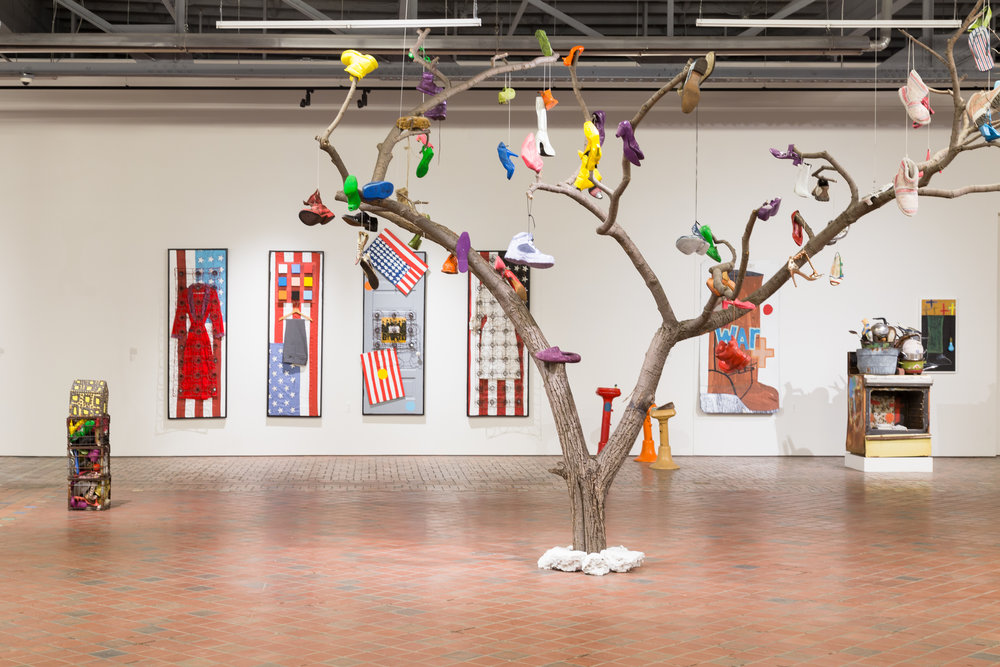
Tyree Guyton is an American Neo-Expressionist artist who is a proponent of Graffiti art and Urban Environmental art. He has waged a personal war on urban blight on Detroit's East Side, transforming his childhood neighborhood into a living indoor/outdoor art museum. Through his art, Tyree has drawn attention to the plight of Detroit’s forgotten neighborhoods and spurred discussion and action.
“When you come to the Heidelberg Project, I want you to think—really think! My art is a medicine for the community. You can’t heal the land until you heal the minds of the people,” says Tyree. This iconic colorfully painted polka dotted neighborhood, which symbolizes our society’s diversity, has played a vital role in transforming the visual indignities of poverty and have placed an international spotlight in this particular community.
Recognized as one of the most powerful art environments in the world, the HP anchors work in: Reinvention and Revitalization of Urban Spaces, Politics of Creativity, Urban Renewal and Education, Urban Ecology and Environmental Justice through Public Art. As the Heidelberg Project celebrates its 30th anniversary, Tyree’s hope is that the community will assume a larger role in the continued evolution of the Heidelberg Project.
Guyton, now 60, was raised on Heidelberg Street, relying on secondhand clothes and shoes because his family was poor. He watched his stable neighborhood deteriorate into blight, violence, prostitution and abandonment. When he was 8, his grandfather, Sam Mackey, who was a housepainter, gave Tyree a paintbrush.

“I felt as if I was holding a magic wand,” Guyton told People in 1988.
But before Guyton could work his magic, he served two years in the Army and returned home to an auto job and a stint as a Detroit firefighter. In 1986, when Guyton was 32, he decided he’d had enough with crime and blight and began decorating crack houses, trees and empty lots with toys, hubcaps, shoes, tires, vacuum cleaners, mannequins, old bikes and TVs.
With his former wife Karen Guyton and 90-year-old Grandpa Sam, Tyree began hanging discarded objects on abandoned houses. Grandpa Sam often painted polka dots because they resembled one of his favorite snacks – jelly beans. For Guyton, the diversity of jelly beans represented racial harmony and became a common theme of the Heidelberg.
Guyton also began to hang shoes from trees and houses after his grandfather recounted stories about lynchings in the south when “all that could be seen were the soles of shoes” of the victim, according to “Imagery of Lynchings” by Dora Apel.

Grandpa Sam was later buried in a casket covered with polka dots. Guyton’s mother, Betty Guyton, now lives in a house covered in polka dots in the heart of the Heidelberg Project.
SOURCE: CLICK HERE

CLICK HERE TO PURCHASE RESOURCES TO HELP YOU TEACH ABOUT BLACK ARTISTS
